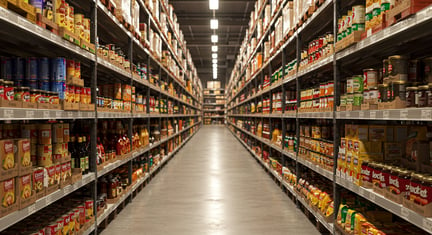The packaging industry is rapidly evolving to meet new global demands for product safety, ethical trade and environmental responsibility.
On 28 October 2024, the British Retail Consortium Global Standards (BRCGS) published BRCGS Packaging Materials Issue 7, replacing the existing Issue 6 of the standard. This revision reflects an industry-wide push to enhance risk management, adapt to global supply chain challenges and incorporate emerging best practices in packaging safety.
To facilitate a smooth transition, BRCGS announced a go live date of 28 April 2025, after which all audits must be conducted against Issue 7, allowing organisations time to review and implement the new requirements.
This article, based on a recent webinar hosted by LRQA highlights key changes, new requirements and recommendations for Issue 7 compliance, with insights from expert panellists, Mark Fincham, Food Technical Manager at LRQA Gwenda Jarrett, Non-Food Programme Manager at BRCGS.
Key updates in Issue 7
Issue 7 introduces several updates to enhance product safety, improve flexibility in auditing and expand the scope of certification to include additional product types:
- Evolving product safety culture and risk assessment: The revised standard emphasises the importance of evolving a product safety culture at every certified site. A foundational change includes enhanced requirements for hazard analysis and risk assessment (HARA), aligning with the Codex Alimentarius guidelines.
- Expanded audit options: A significant addition is the option for a blended audit approach, allowing companies to manage both on-site and remote components effectively. This flexibility helps maintain standards across production areas while accommodating operational needs.
Mark Fincham emphasised, “This addition reflects industry demands for flexible auditing options that don’t compromise compliance.”
- Standard scope for new materials and products: Issue 7 expands certification eligibility to single-use disposable products commonly used in food service sectors, as long as they share the same manufacturing process as packaging materials. The new standard continues to exclude activities such as storage, transportation and wholesale from certification.
Enhancements in terminology and documentation
BRCGS has refined terminology in Issue 7 to reduce ambiguity, for example:
- “Personnel” now broadly refers to all site workers, not just “staff”.
- “Manufacturing” replaces “production” to ensure clarity.
Internal documentation requirements
Sites must now maintain thorough documentation for all safety practices, from culture plans to hazard assessments. Issue 7 includes a streamlined audit checklist and self-assessment form, available in multiple languages to facilitate comprehensive compliance.
Management commitment and confidential reporting
- Senior management accountability: A strengthened management commitment requirement underscores leadership’s role in driving continual improvement. Issue 7 expects management teams to actively support safety culture initiatives, fostering a proactive approach to risk reduction.
- Confidential reporting of safety concerns: The standard now includes a confidential reporting system requirement, reinforcing the responsibility of personnel to report product safety issues without fear of retaliation.
- New requirements in hazard analysis and risk assessment (HARA): Gwenda Jarrett outlined several key changes in HARA to ensure logical flow and practical application. New stipulations include:
- Annual verification of process flows to confirm operational accuracy.
- Outsourced products: clearer guidelines on managing risks associated with subcontracted products.
- Replacement of critical control points (CCP): Terminology updates replace “CCP” with “critical control measures” to align with packaging standards, helping to clarify focus areas for non-food industries.
Enhanced supplier monitoring and traceability
To meet growing demands for transparency, Issue 7 clarifies requirements for supplier monitoring and traceability. Compliance requires annual trace tests, now conducted within four hours, to assure quick response capability in case of incidents.
Adjustments to site standards and environmental monitoring
- Building and utilities requirements: Updated site standards provide clearer distinctions for areas like walls, floors and ceilings to improve audit reporting and tracking. Utilities standards now prioritise risk assessments that consider a product’s intended use, strengthening contamination prevention.
- Environmental monitoring programmes: The standard mandates annual reviews of environmental monitoring programmes, a proactive measure to assure long-term programme effectiveness.
- Allergen management protocols: Issue 7 requires sites to include allergen management as part of their HARA plans, complete with segregation, specification controls and staff training for enhanced allergen safety.
Conclusion: navigating change with the right support
With the transition to BRCGS Packaging Materials Issue 7, certified organisations are advised to begin building their understanding of the new requirements to ensure compliance with the new version of the standard. In the coming weeks, LRQA will be publishing FAQs and a gap-analysis tools to help its clients and businesses prepare for the transition. Find out more
Sign up to our newsletter to stay up to date with the release of these tools. To find out more about the key changes, watch our on-demand webinar here.









